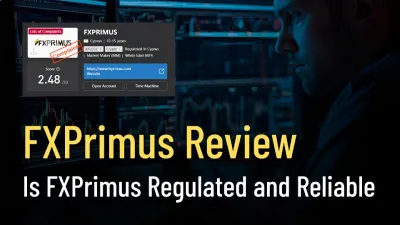简体中文
繁體中文
English
Pусский
日本語
ภาษาไทย
Tiếng Việt
Bahasa Indonesia
Español
हिन्दी
Filippiiniläinen
Français
Deutsch
Português
Türkçe
한국어
العربية
Effects of Quantitative Easing on Foreign Exchange Movements
Abstract:Most currency trading is done by banks, either on their own behalf or on behalf of customers. They also trade with counterparties, which could be other financial institutions or non-financial organizations. 89 percent of currency trading occurs through the dollar, which is used as a vehicle currency. For example, if you want to go from the Malaysian ringgit to the South African rand, you must pass through the dollar.

Most currency trading is done by banks, either on their own behalf or on behalf of customers. They also trade with counterparties, which could be other financial institutions or non-financial organizations. 89 percent of currency trading occurs through the dollar, which is used as a vehicle currency. For example, if you want to go from the Malaysian ringgit to the South African rand, you must pass through the dollar.
Influence of the COVID-19 pandemic on currency movements
The COVID-19 pandemic has had a limited impact on the dollar. It has not pushed the dollar up against all other currencies, as it did in 1918, and it has had a negligible effect on the exchange rates of vulnerable countries. The countries that are most affected by this disease are those with large stocks of foreign debt and those that depend on commodity exports. On the other hand, currencies in countries without these vulnerabilities have shown relatively little movement.
The impact of COVID-19 on currency exchange rates is a concern for emerging markets, particularly in Asia. However, it is important to note that the virus has not yet caused a global pandemic. This is because the majority of COVID-19 cases were documented before the January 23 travel restrictions. Furthermore, there was at least five percent of undocumented cases among documented cases. Therefore, the COVID-19 pandemic could have a detrimental impact on emerging stock markets.
In assessing the effect of the pandemic on foreign exchange markets, economists must look beyond conventional data points. A wide range of factors, such as the unemployment rate and economic activity, must be considered. One major factor in this situation is the growing number of lockdowns in fear of COVID-19.
Effects of quantitative easing on currency movements
The effects of quantitative easing (QE) on foreign exchange movements are often complex and heterogeneous. They can affect foreign exchange rates, stock prices, and long-term interest rates. In this article, we examine how QE has affected the movements of foreign exchange rates in several EM economies.
One key variable that can help determine the effectiveness of QE is the long-term interest rate. This variable helps to link the quantitative easing policy to the real economy. This is important because QE can lead to asset bubbles, inflation, and income inequalities. The ECBs recent asset purchase program has been associated with a depreciation of the euro and falling long-term rates in the US.
A lower euro relative to other large currencies will benefit European companies competing internationally. However, the initial impact of QE has been modest and has yet to fully manifest. In the fall of 2014, the euros value against the dollar began to fall. The initial QE announcement was followed by QE2, QE3, and Operation Twist, which all had positive effects on exchange rates.
The massive intervention in the foreign exchange market could have significant implications for China. Its economy is becoming increasingly unbalanced, and reliant on foreign investment and exports. However, domestic consumption in China now accounts for 34.1 percent of GDP, while investment is at a low of 5.8 per cent. As a result, China may be facing a substantial problem in the form of non-performing loans.
Methods of predicting long-term exchange rate
There are several methods of predicting the future movement of foreign exchange rates. The best method is to study investors intentions. Although the intention of large investors may not be made public, the behavior of individuals is often indicative of future trends. In some cases, investors may even change their strategies based on recent economic news or price fluctuations.
These methods have a high probability of producing accurate forecasts. However, the accuracy varies among different currencies. As a result, it is important to monitor the performance of forecasts over time. By measuring the accuracy of predictions over time, MNCs are likely to gain more confidence in the results.
A common method of predicting long-term foreign exchange rate movement is a Bayesian statistical model. This model uses a moving average of closing prices from the last 20 days. Its output is a probability density curve plot that shows the full probability distribution of future exchange rate movements. This model was found to be highly accurate in predicting the future prices of four currency pairs.
Different methods of predicting foreign exchange rate movements have been developed over the years. Many of them are based on machine learning techniques. Some models are based on single-processing methods, while others include multiple-processing methods. Other techniques include regression techniques, decision trees, fuzzy logic, and support vector machines. In addition, researchers have developed a hybrid model based on the cuckoo search algorithm.
Disclaimer:
The views in this article only represent the author's personal views, and do not constitute investment advice on this platform. This platform does not guarantee the accuracy, completeness and timeliness of the information in the article, and will not be liable for any loss caused by the use of or reliance on the information in the article.
Read more

FXPIG Exposed: Traders Report Withdrawal Denials, Fund Scams & Regulatory Flags
Do you face massive losses due to astonishing spreads at FXPIG? Have you witnessed multiple trade executions by the Georgia-based forex broker even though you wanted to execute a single order? Has this piled on losses for you? Is the FXPIG withdrawal too slow? Maybe your trading issues resonate with some of your fellow traders. In this FXPIG review article, we have shared these issues so that you can introspect them thoroughly before deciding on the best forex trader.

Understanding What Makes a Good Spread in Forex
Find out what a good spread in forex trading is, typically between 0 to 5 pips, and why it matters for traders aiming to reduce expenses.

Does WealthFX Generate Wealth or Losses for Traders? Find Out in This Review
The name WealthFX sounds appealing for all those wishing for a rewarding forex journey. However, behind the aspiring name are multiple complaints against the Comoros-based forex broker. These trading complaints dampen the broker’s reputation in the forex community. In this WealthFX review article, we have shared some of these complaints here. Take a look!

FXPrimus Review: Is FXPrimus Regulated and Reliable for 2025?
FXPrimus is a CySEC-regulated forex broker offering MT4, MT5, and WebTrader with flexible leverage and diverse trading instruments since 2009.
WikiFX Broker
Latest News
150 Years Of Data Destroy Democrat Dogma On Tariffs: Fed Study Finds They Lower, Not Raise, Inflation
The Debt-Reduction Playbook: Can Today's Governments Learn From The Past?
FIBO Group Ltd Review 2025: Find out whether FIBO Group Is Legit or Scam?
Is INGOT Brokers Safe or Scam? Critical 2025 Safety Review & Red Flags
Trillium Financial Broker Exposed: Top Reasons Why Traders are Losing Trust Here
Amillex Withdrawal Problems
IEXS Review 2025: A Complete Expert Analysis
IEXS Regulation: A Complete Guide to Its Licenses and Safety Warnings
Oil and gas giant Wood plc sold to Dubai engineering firm
FONDEX Review: Do Traders Really Face Inflated Spreads & Withdrawal Issues?
Currency Calculator




